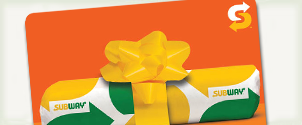Loyalty programs keep guests coming back for more purchases. But what about an industry’s loyalty to specific marketing channels?
For over a decade working with QSR and fast casual restaurants, Dennis Becker has seen many brick-and-mortar brands slow to update their strategies and take full advantage of the data and insights provided by a fully-digitized platform.
As CEO of Mobivity, Becker has worked with classic brands and rising stars, from Dunkin Donuts, Red Lobster and Chick-fil-A to Smashburger. A partnership with Subway, which began in 2015, will continue to gain momentum in the coming year, as the global sandwich chain activates new strategies in the mobile space.
Currently, one in 20 U.S. consumers participate in some kind of Mobivity-supported promotion.
“There is an incredible amount of inertia throughout the history of brick-and-mortar brands, which are traditionally broadcast-oriented operations,” Becker explained. “Even within the digital marketing world, with Facebook or search-based ads, the strategy is still essentially broadcast. The brand is left to discover what caused a sale.”
Mobivity’s Re-currency platform, on the other hand, uses purchasing history and other data points, to tailor promotions to fit customer behavior, while tracking what works and encouraging increases in frequency and spend. Through SMS promotions linked to point-of-sale, Mobivity “closes the loop” so that chains can take full advantage of all the data.
“The move to a data-driven orientation for brick-and-mortar brands is really going to become an act of survival,” Becker adds. “Brands still stuck in analog are struggling.”
Return on receipts
“Our mission at Mobivity is to help transform offline commerce,” said Becker. “Unlike online retail giants like Amazon, many brick-and-mortar stores are operating in an analog world, where TV actually dominates most budgets, and marketing attribution is still very limited. The proprietary platform we developed gets into the point-of-sale environment and unlocks the data in real time.”
The Mobivity platform can support any number of strategies through the mobile channel, from mobile coupons to brand campaigns.
With point-of-sale activation, Mobivity also executes receipt-based offers targeting specific customers in-store. According to Becker, a recent Smashburger campaign initiated very noticeable increases in frequency and spend, by targeting all customers who spent under seven dollars at the register. They received printed receipts offering three dollars off a purchase of 10 dollars or more, if they came back in the next five days. Statistically, the return customers tended to come back after several weeks or months, not days. With the receipt promotion, these low-spending Smashburger guests came back in less than a week, and spent, on average $16, doubling their spend.
Fresh approach to mobile messaging
A giant in its own right, brick-and-mortar chain Subway has an annual marketing budget of $800 million, three quarters of which has been traditionally spent on TV, radio, physical mailers and other offline channels.
In partnership with Mobivity, Subway will help usher a move in the mobile space from SMS and apps to Rich Communication Services (RCS), a developing mobile technology DMN has covered in recent years.
“Over the next two years, RCS will become more common,” Becker stated, describing the offering as essentially a “text-messaging experience that evolves from text-based to messages with images and videos, buttons and payments…everything experienced in an app, now found in a text message.”
The ability to provide an app-like experience in a text message allows for more meaningful communication, as well as a richer, branded environment for consumers to use when making purchases, or for using other mobile tools, like store locators and customer surveys.
Although RCS is available in most major markets in North America, the U.K and Japan, marketers are still waiting to see how the format is adopted by major mobile players, including Apple’s iMessages platform. Apple has yet to show their hand. Meanwhile, Mobivity has partnered with Google, who, in turn, is trying to gain more acceptance for RCS by collaborating with manufacturers like Samsung.
According to David Galante, SVP, Product Marketing for Mobivity, the Subway brand “sees mobile technology as a complementary component of any digital or TV campaign.” In the overall QSR space, restaurant remote ordering is expected to be one of RCS’s “killer apps” in 2019.
“Subway is evaluating several technologies to reach customers at a one-to-one level,” Galante said. “In the United States, Mobivity is trusted to deliver millions of personalized offers via SMS, once a week for opt-ed in users.”
He adds: “Subway is turning to Mobivity to find a solution which allows Subway to reach out to any Subway customers regardless of their location. In addition to delivering personalized offers, there is strong need to convert those marketing messages to transactions.”
Navigating SMS and other mobile channels in different countries poses a challenge, due to varying service charges and privacy regulations. However, with over 40,000 locations in 100 countries, Subway is poised to be one of the major brands to tip the scales in favor of new RCS messaging technology.







